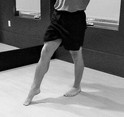- Home
- About Us
- TSPT Academy
- Online Courses
-
Resources
- Newsletter
- Business Minded Sports Physio Podcast
- Day in the Life of a Sports PT
- Residency Corner
-
Special Tests
>
-
Cervical Spine
>
- Alar Ligament Test
- Bakody's Sign
- Cervical Distraction Test
- Cervical Rotation Lateral Flexion Test
- Craniocervical Flexion Test (CCFT)
- Deep Neck Flexor Endurance Test
- Posterior-Anterior Segmental Mobility
- Segmental Mobility
- Sharp-Purser Test
- Spurling's Maneuver
- Transverse Ligament Test
- ULNT - Median
- ULNT - Radial
- ULNT - Ulnar
- Vertebral Artery Test
- Thoracic Spine >
-
Lumbar Spine/Sacroiliac Joint
>
- Active Sit-Up Test
- Alternate Gillet Test
- Crossed Straight Leg Raise Test
- Extensor Endurance Test
- FABER Test
- Fortin's Sign
- Gaenslen Test
- Gillet Test
- Gower's Sign
- Lumbar Quadrant Test
- POSH Test
- Posteroanterior Mobility
- Prone Knee Bend Test
- Prone Instability Test
- Resisted Abduction Test
- Sacral Clearing Test
- Seated Forward Flexion Test
- SIJ Compression/Distraction Test
- Slump Test
- Sphinx Test
- Spine Rotators & Multifidus Test
- Squish Test
- Standing Forward Flexion Test
- Straight Leg Raise Test
- Supine to Long Sit Test
-
Shoulder
>
- Active Compression Test
- Anterior Apprehension
- Biceps Load Test II
- Drop Arm Sign
- External Rotation Lag Sign
- Hawkins-Kennedy Impingement Sign
- Horizontal Adduction Test
- Internal Rotation Lag Sign
- Jobe Test
- Ludington's Test
- Neer Test
- Painful Arc Sign
- Pronated Load Test
- Resisted Supination External Rotation Test
- Speed's Test
- Posterior Apprehension
- Sulcus Sign
- Thoracic Outlet Tests >
- Yergason's Test
- Elbow >
- Wrist/Hand >
- Hip >
- Knee >
- Foot/Ankle >
-
Cervical Spine
>
- I want Financial Freedom
- I want Professional Growth
- I want Clinical Mastery
 In the past few weeks, I have been treating several patients following lateral ankle sprains and s/p ankle fractures. Following an ankle injury, almost all patient's experience decreased dorsiflexion range of motion and decreased plantarflexor muscle (gastrocsoleus complex) strength. Recently one of my patients has began reporting low back pain and neural tension down the affected lower extremity. While he had positive neural tension for the tibial nerve and hypomobility of his lumbar spine, the cause of the dysfunction was his movement pattern when performing calf raises. Like this post? Check out exclusive information on our Insider Access page. What Can You Do Clinically?
1) Inquire about a previous history of low back pain or leg injury during the initial visit. A previous injury predisposes the patient to future injury. The gentleman I have been treating in the example above had a long standing history of lumbar pain. It was not his 'greatest impairment' at the time of the evaluation, so he failed to mention it and I failed to inquire about it. 2) Train from the trunk down when performing ankle exercises. When performing calf raises, make sure your patients are in a neutral lumbar spine. Ensure their hips are not in adduction or internal rotation and they are not collapsing into pronation or excessive supination. I often have my patients start performing calf raises with their feet together to minimize these compensations. If the patient retrains the muscles from a poor staring position, these same compensations will exist during functional movements. 3) Do not be afraid to breakdown an exercise if compensations exist. For example, if the patient cannot perform a single calf raise without over-engaging his lumbar paraspinals, have the patient perform supine theraband calf presses with a posterior pelvic tilt and TrA activation. They must demonstrate control of the entire movement pattern not just the isolated muscle. Jim
0 Comments
Leave a Reply. |
Dr. Brian Schwabe's NEW Book in partner with PaleoHacks!
Learn residency-level content on our
Insider Access pages We value quality PT education & CEU's. Click the MedBridge logo below for TSPT savings!Archives
July 2019
Categories
All
|






 RSS Feed
RSS Feed